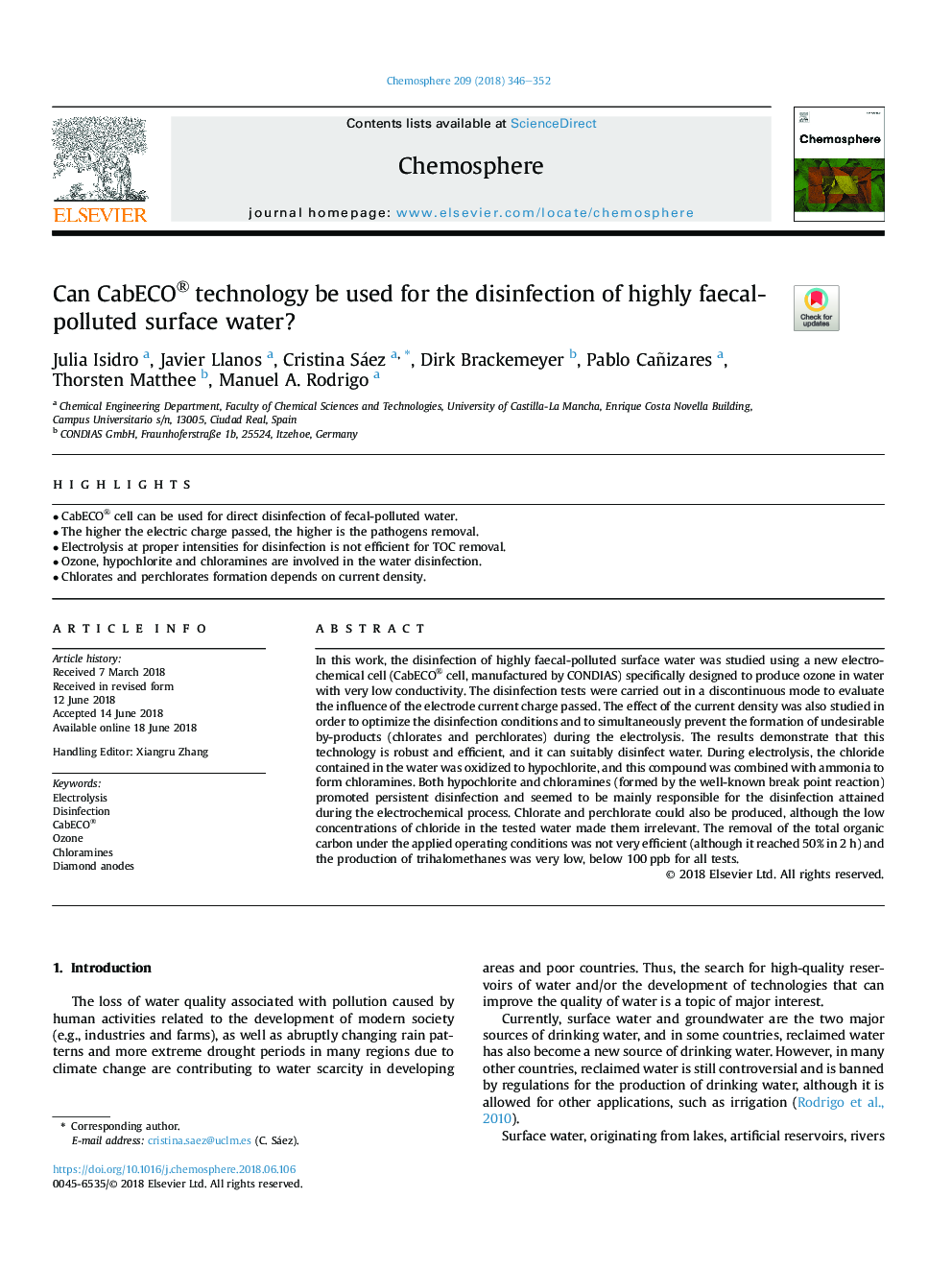| Article ID | Journal | Published Year | Pages | File Type |
|---|---|---|---|---|
| 8850626 | Chemosphere | 2018 | 7 Pages |
Abstract
In this work, the disinfection of highly faecal-polluted surface water was studied using a new electrochemical cell (CabECO® cell, manufactured by CONDIAS) specifically designed to produce ozone in water with very low conductivity. The disinfection tests were carried out in a discontinuous mode to evaluate the influence of the electrode current charge passed. The effect of the current density was also studied in order to optimize the disinfection conditions and to simultaneously prevent the formation of undesirable by-products (chlorates and perchlorates) during the electrolysis. The results demonstrate that this technology is robust and efficient, and it can suitably disinfect water. During electrolysis, the chloride contained in the water was oxidized to hypochlorite, and this compound was combined with ammonia to form chloramines. Both hypochlorite and chloramines (formed by the well-known break point reaction) promoted persistent disinfection and seemed to be mainly responsible for the disinfection attained during the electrochemical process. Chlorate and perchlorate could also be produced, although the low concentrations of chloride in the tested water made them irrelevant. The removal of the total organic carbon under the applied operating conditions was not very efficient (although it reached 50% in 2â¯h) and the production of trihalomethanes was very low, below 100â¯ppb for all tests.
Related Topics
Life Sciences
Environmental Science
Environmental Chemistry
Authors
Julia Isidro, Javier Llanos, Cristina Sáez, Dirk Brackemeyer, Pablo Cañizares, Thorsten Matthee, Manuel A. Rodrigo,
